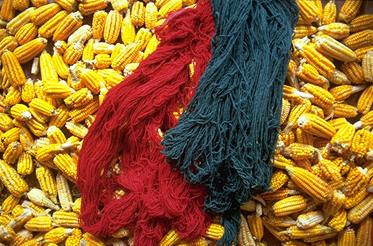|
 Q: Who are the Zapotecs? Q: Who are the Zapotecs?
A: The Zapotecs are an indigenous people in the southern Mexican state of Oaxaca. Through the centuries they have maintained much of their traditional way of life.
Q: Are the weavings made by hand?
A: Every step of the process is done by hand--the carding of the wool, the yarn spinning, the dying and finally, the weaving.
Q: How long do the rugs last?
A: With proper care, your weaving should last for many years.
Q: Should I use these rugs on the floor, or should I hang it on the wall?
A: The durable quality of the weaving means you can put it on the floor and still get many years of use from it. The beauty of the color and designs make it a perfect design accent on your wall. You can take your pick.
Q: How do I hang a weaving?
A: The easiest way is to take the tooth side of two velcro strips and attach them to the wall. This holds it snugly, and you can still easily remove the rug for easy cleaning.
Q: How should I clean my rug?
A: For normal cleaning, a vacuum is recommended (snapping can break the fibers over time). Don't wash your rug with soap or detergent. If it gets wet, blot it dry, don't rub. Small spots can be removed with light treatment of drycleaning fluid, but larger ones should be taken to a dry cleaner.
Q: How long does a rug take to weave?
A: An average 2.5'x5.0' rug can take ten days or more to complete, depending on the complexity of the design. Larger area months can take two to three months or even more.
Q:How are the rugs woven?
A: Each weaving is created on a large wooden two pedal loom, which the Spanish first introduced in the 1500's.
Q: How long does it take to learn to weave?
A: Zapotec children in Teotitlan del Valle start learning to card wool as young as age three. By the time they reach their late teens, they are skilled weavers.
Q: What are the designs in the rugs?
A: Many of the designs you see in the weavings are based on traditional designs found on ancient Zapotec and Mixtec ruins.
Q: What are the dyes made from?
A: Most of the dyes in these rugs are natural dyes, made from plants and insects. Occasionally a synthetic dye will be used when an exceptionally bright color is desired. For more on the dyes, go here.
[Visit the Weavers]
|

